I recently saw some amazing photos of a yarnbombing installation on a hiking trail in Santa Barbara, CA and I just had to interview the yarnbomber! The impact of the piece against the mountainous backdrop was magnificent. The colors popped like nothing else and I’m sure it was very difficult to miss. Luckily, the artist responsible for the installation (along with lots of knitting and crocheting volunteers), Stephen Duneier, was open to talking with me about the yarnbombing installations he has done.
1. Tell me a little about yourself.
I am a hedge fund manager by day, (http://bijacap.com/stephen-
Every year I do some odd set of resolutions. Last year it was to learn 12 new things and to do 12 charitable things that didn’t involve writing a check. (http://12for2012.com). My wife suggested that I learn how to knit. The scarf I attempted looked like a triangle and the combination of seeing a picture of a yarnbombed bus on the internet and being a fan of Christo’s work since I was a kid growing up in Florida when he wrapped the Keys, I decided I wanted to give it a shot.
Last year’s yarnbombing of a 40 foot tall eucalyptus tree 2.6 miles up the Cold Spring Trail in the Los Padres National Forest of the Santa Ynez Mountains was my first.
One of my other “Learning” resolutions was social media. So I combined the two. I created a photoshopped rendering of what the finished project should look like and posted it along with pics of every piece I knitted on instagram, pinterest, facebook, ravelry and my blog, along with a description of the project and the story behind it. Some local knitters also contributed and I gave them full credit on each of those sites as well. Anytime someone would “Like” a picture or comment on it, I would look at their pics to see if they were knitters/crocheters. If they were, I would send them a message asking for help. Every piece that arrived became a part of the story and with the addition of each contributing knitter we began to develop a community. Just as I was trying to recruit help, my blog happened to take off when wordpress featured one of my entries related to my attempt to learn how to unicycle. That boosted the size of my audience tremendously. That and learning how to use keywords helped bring more people to the site and the content seemed to inspire people to get involved.
I had an MIT graduate who worked for me at the time and I’m a finance guy who loves a good spreadsheet. This tree was a massive, unwieldy collection of branches within branches and I had no idea how to bring together all these odd shapes and sizes I was collecting onto the target. So we devised a system for mapping out a tree into distinct sections which could be measured, pre-prepped and tracked. My tree became 52 sections which I entered into a spreadsheet. I then essentially created 52 jigsaw puzzles which were sewn together, rolled up, individually wrapped and tagged with their identifying section number. When we arrived at the tree, I had no idea how many volunteers would show up to help or how much they would know about yarnbombs. The system made it easy to delegate to a group of volunteers who had no knitting or yarnbombing experience, including me.
It was not commissioned and while I tried to obtain permission, I never found the right people to ask, so it was a true guerrilla yarnbombing. (I kinda enjoyed that aspect.) With the target being 2.6 miles from the lower trailhead, 3 miles from upper access and the fact that I wasn’t altering the tree and it would only be up for 9 days, all improved my odds of getting it done under the radar.
While I loved the experience of the yarnbomb and the sense of community that it generated online and on the trails, I thought I’d never touch yarn again. Then I started getting emails from people around the world who were telling me how my project had inspired them to attempt their own. Businesses asked me to do commercial yarnbombs. Individuals and non-profits asked me to consult for them. TV shows and even a textbook manufacturer asked for permission to use my images of the yarnbomb. This one-off project of mine had taken on a life of its own. The head of Woza Moya, an NGO in South Africa, told me my project had inspired her to do the same down there and asked for my help with logistics. An upcoming project in London cited me as their inspiration as well. Then Marcy Kraft, aka Crochet Grenade, who had contributed a piece to my previous project and gave me lots of emotional support when I was feeling overwhelmed, asked for my help with her Rubik’s Cube yarnbombing outside ComiCon in July. She needed hundreds of crocheted granny squares of a specific dimension. How could I not return the favor? So I learned how to crochet by watching her YouTube video and knocked out 21 pieces while in airports, on airplanes and in hotel rooms during business trips. Turns out I actually enjoyed crocheting and missed the camaraderie of the last project. The final factor was my parents. The first yarnbomb inspired them to attempt and accomplish their very first hike, and has been a central topic of conversation for them with friends ever since. When they told me they were visiting again in September, I decided I would target that window of opportunity for a second yarnbomb and therefore a second hike. (It worked.)
The first yarnbomb was a spot that meant a lot to me, but it was much further up the trail than most hikers normally go. I saw the yarnbomb as a way to entice them to push on beyond their comfort zones and to draw others onto the trails who normally wouldnt go. The problem was, no news outlets would cover it, so unless you happened to hear via word of mouth, you missed it. Since it was only up for 9 days, there wasn’t much time for word of mouth to gather momentum. This time I wanted to select a spot that was easily spotted from the skies, was on a more popular hiking destination and closer to the trailhead, in the hopes that it would naturally attract more visitors and draw more people to get out on the trails. The boulder atop the Saddlerock Trail was the perfect target.
Plus, the previous project required 4 of us to carry a 14 foot, 80 pound ladder 2.6 miles into the mountains in 90 degree heat. They all told me they would not be volunteering for that duty again, so I had to pick a target that wouldnt require the use of a ladder.
Normally those rocks are configured in the shape of a smiley face, peace sign, yin/yang, etc. I thought the word BOOM! made for the perfect accompaniment to the explosion of a yarnbomb.
I left it up again for just 9 days, which gives visitors 2 weekends to get out there. By keeping the viewing time so brief it doesnt allow people time to procrastinate and it doesnt give its detractors much time to complain or give credence to their argument that it is litter. Plus, in my mind, my projects are sort of like the mandalas of Tibet’s monks. They require a tremendous amount of work, they are briefly appreciated and then disappear forever. It naturally creates a kind of close knit community among those who find out about it and make the effort to see it, which I hope will develop with each installation.
I am an avid hiker. It is where I live and play almost every day. I find it amazing that so many people live within a mile or so of a trailhead and yet never go on them. I like hearing about people who go on their first hike ever just to see my project. That is my barometer of success. I also like that it makes my projects unique and most importantly, pure. It goes back to the very old sayings, “l’art pour l’art'” or “Ars gratia artis”, meaning Art for art’s sake. No government, commercial, or even moral attachment. Just a simple, beautiful analog endeavor that, for an instant, overpowers an increasingly cynical, digital world. The “Whoas!”, “Wows!” and smiles that instinctively interrupt deep conversations and exhaustive panting as hikers turn the corner and see it for the first time, serve as evidence of the power of the installations.
I have decided to make it an annual event in the mountains. My next project will require me to learn a few new skills and to build upon the yarnbomb arsenal I have collected to date. The target and details will remain a secret until just before installation next summer.
Go big or go home. Yarnbombing is not about playing it safe or throwing some pieces on a tree. It is about dreaming, planning and executing what others think impossible or even “silly.” Tap into the global community of knitters, crocheters, crafters and yarnbombers around the world. I have found it to be a very welcoming, incredibly selfless and supportive group, even to a hack from the outside like me. (Thank you!)

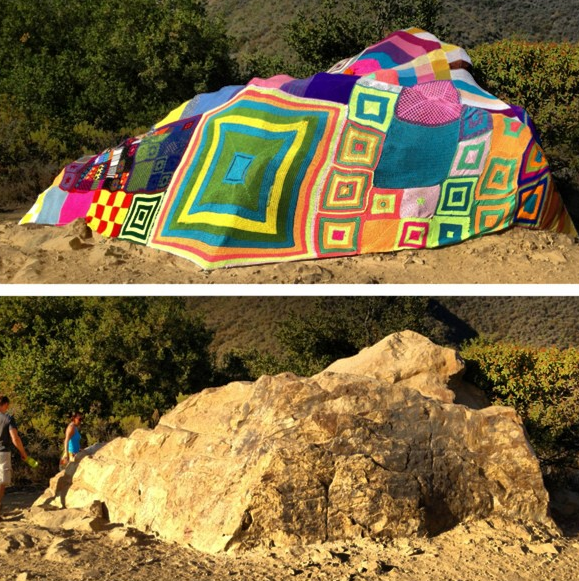
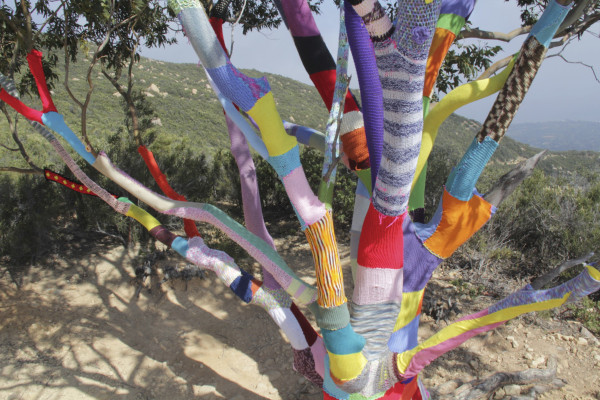
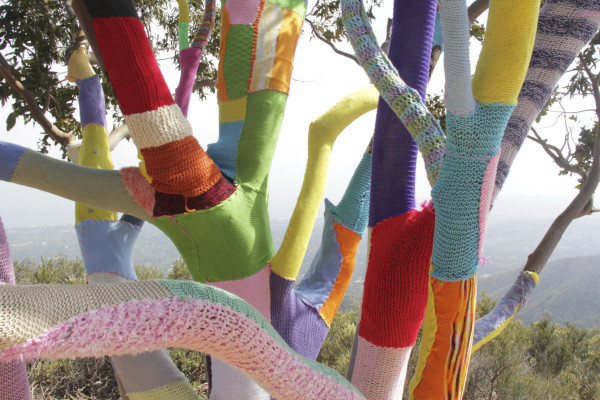
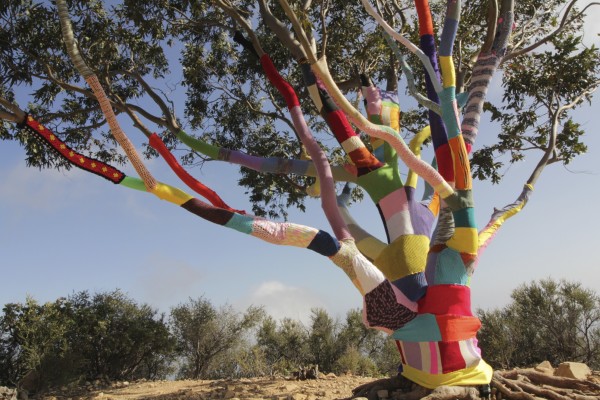
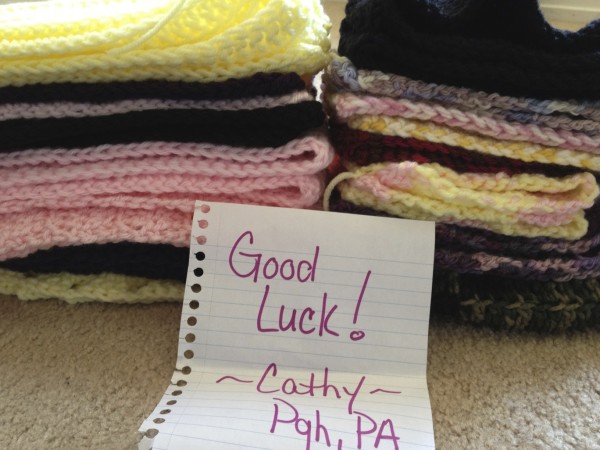
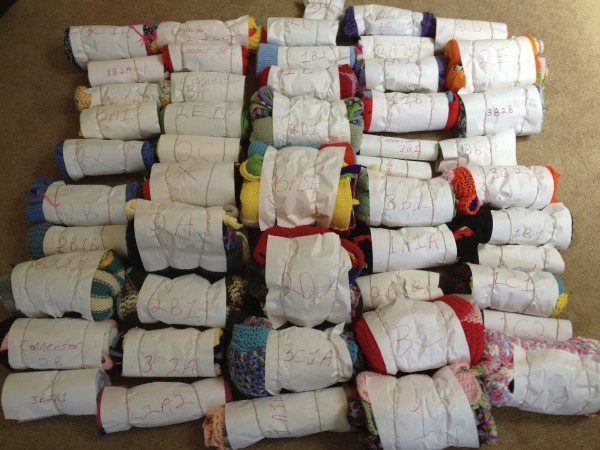
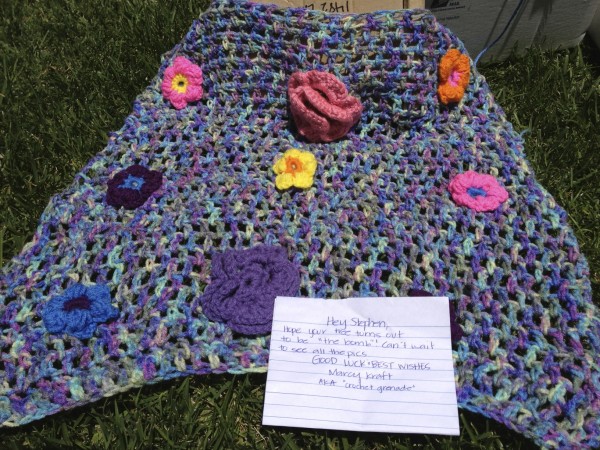
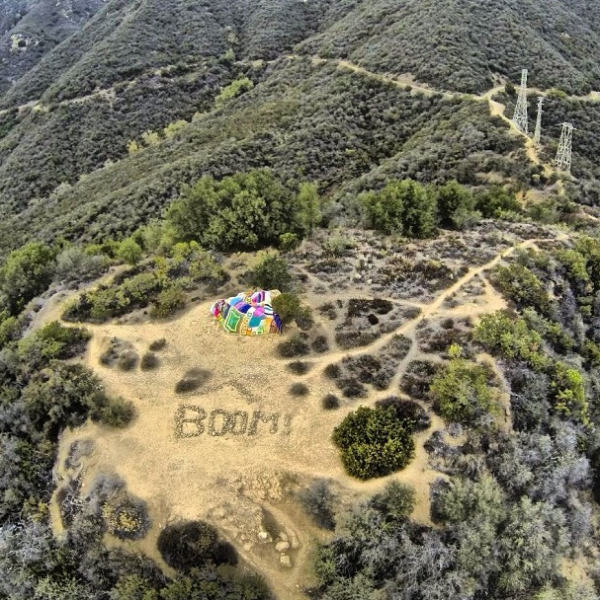
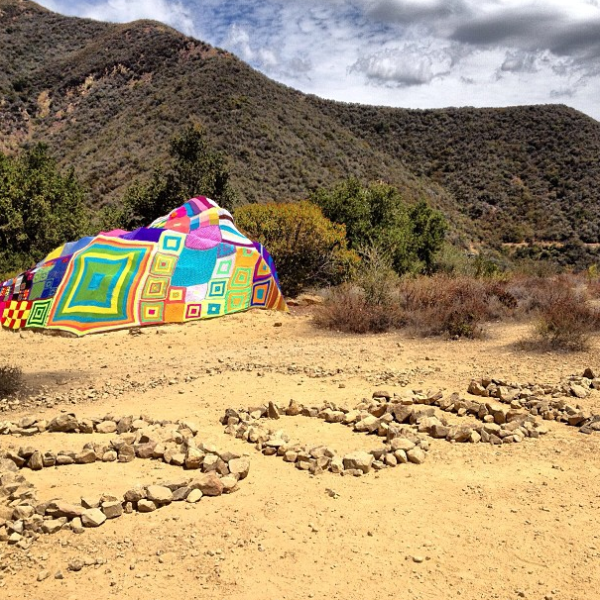
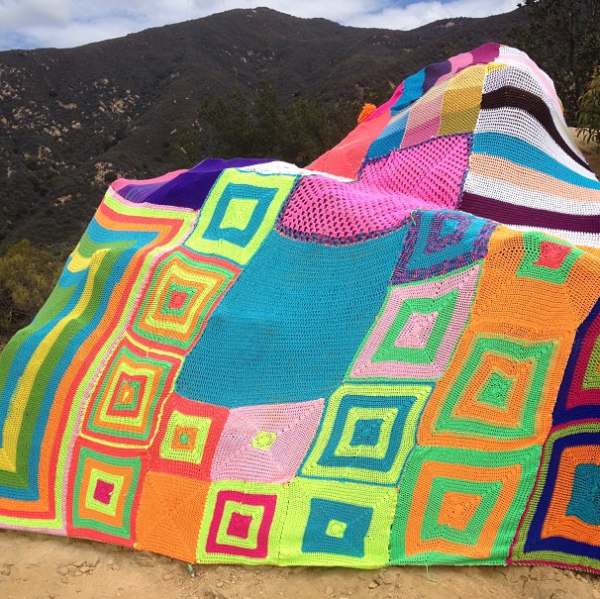
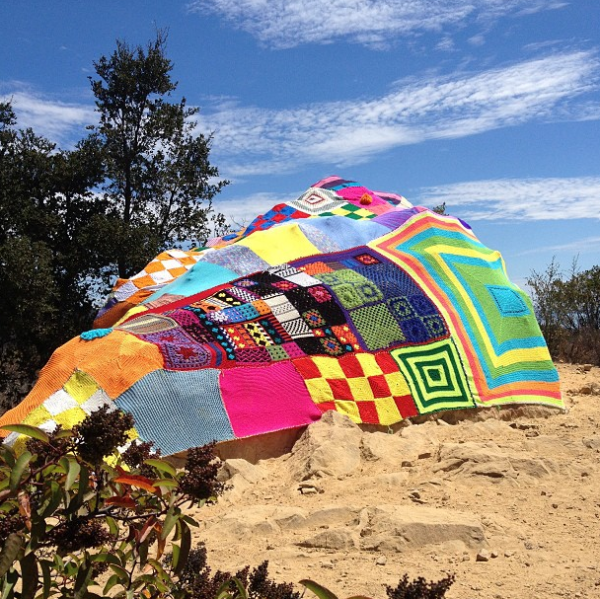

Wonderful work Stephen you have been a great support and inspiration to our organisation. Keep bombing. Paula
Thanks for this great series, Jessie. I’m looking forward to learning about more artists and projects!
SUPER inspiring!!
stephen- i would love to help with the next project… seriously!
please get in touch thru jessie.
Great Interview, thanks for asking these questions Ishiknits. I love the quote, “go big or go home.” Stephen I was thinking the that Flatrock installation reminded me of Christo’s work, so I was interested to read the wrapped islands helped inspire it.